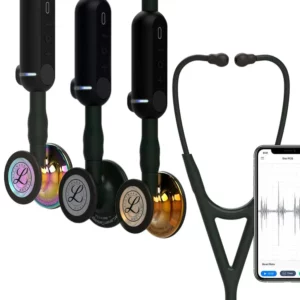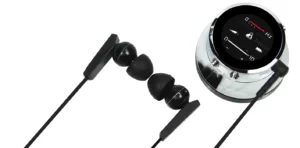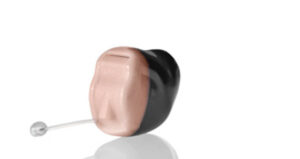As a medical professional, choosing the right amplified stethoscope can be crucial to diagnose patients effectively. However, the options available can be overwhelming, leading to confusion.
In this blog, I’ve collated information from various sources, including medical forums and audiology forums, to help you make an informed decision.
For use without hearing devices:
We recommend the following top three amplified stethoscopes:
1. 3M™ Littmann® CORE Digital Stethoscope

- With 40x amplification, traditional tubing, rechargeable battery with 10 hours of continuous battery life, and noise reduction technology that cancels up to 85% of background noise.
- It was found to be the best digital stethoscope in an independent review.
- It also offers the ability to switch between analog (traditional) and digital (amplified) mode and allows sounds to be recorded or transferred in real-time to a computer/app for further analysis.
Best price $607.50
2. Cardionics E-Scope

- With 30x amplification, battery-operated, remembers the last volume setting, and has 64 levels for precise sound adjustment.
- Additionally, it offers a 3.5mm headphone jack for headphones and a second listener, and its off-the-shelf AAA battery is easy to replace.
CONS
- No analog mode.
- No Bluetooth.
Best price $815
3. Thinklabs The One

- With 100x amplification, a rechargeable battery, and a 3.5mm jack to connect to high-quality headphones.
- LED on the front display allows to precisely define the range of frequencies. By precisely narrowing the bandwidth, it becomes possible not only to remove background noise, but also to select some specific heart sounds without being disturbed by the breathing sounds.
CONS
- The price. Available in AU for $1,400 (or try to get cheaper from overseas)
- No analog mode
- No Bluetooth capability
- Note: This one came second in the review, but was knocked down due to it’s price.
For clinicians who wear hearing aids, there are some additional options to consider.
For those with Receiver I Canal (RIC) with open domes.

Option 1
Using a traditional stethoscope with hearing instruments in the ears may be tolerable, and an amplified stethoscope with standard earpieces may work as well.
Option 2 – The Cardionics eScope Belt Model with Headphones

- This may be an excellent choice as it is made for hearing-impaired users and comes with a 3.5mm headphone jack and precise sound adjustment levels.
- With 30x amplification, battery-operated, remembers the last volume setting, and has 64 levels for precise sound adjustment.
CONS
- No analog
- No Bluetooth
Best price $880
Option 3
Try a digital stethoscope with Bluetooth technology that can stream to a high quality set of oversized headphones (to minimize feedback) with bass and noise reduction. The chances of discomfort are then extremely low.
For clinicians who wear Invisible in Canal (IIC) devices

Option 1
Consider using any of the options recommended for RIC with open domes, including using a stethoscope as per normal.
Option 2 – Stethomate Tips
- These go over the end of your IIC device, but the success rate is very low (around 20-30%).
- These rubber adapters attach to the hearing device so when the stethoscope earpiece is inserted into the ears, the stethomate cups the hearing instrument, including the microphone port. Theoretically, this allows auscultation sounds to be directed to the hearing aid microphone.
- BUT It must go over the hearing aid microphone which is located close to the outer edge of the device faceplate. So it is very likely the stethomate tip will cover up the microphone port minimising any sound transference. Even with proper alignment, most individuals can’t tolerate the pressure transferred to the hearing aid by stethomate tips from the spring-loaded earpieces of the amplified stethoscope.
For clinicians with RIC / BTE with Bluetooth capability
Option 1
Again, Cardionics eScope Belt Model with Headphones, or a digital stethoscope streaming to large high quality headphones.
Option 2
Littman Core has the ability to stream to the devices via the app.
CONS
- From the manufacturer: not recommended for direct streaming to hearing devices.
- “The 3M Littmann CORE Digital Stethoscope cannot pair directly with hearing aids. However, if your hearing aids are Bluetooth® compatible and can connect to your phone, you can utilize the ‘Play from Headphones’ feature in the app to stream sound wirelessly into the hearing aids from the phone”.
- The convenience may not compensate for the poorer audibility and sound quality afforded by streaming. According to the literature, the most important auscultation sounds for differential diagnosis fall well below 1000 Hz. Lung sound range from 200 – 600 Hz, and heart sounds fall in the 70 to 120 Hz range. Hearing devices do not amplify these very low frequencies.
Summary for HA users
It seems like it would just be easier to tell you to take the hearing device out when performing auscultation, and then use the amplified stethoscope. But that is not practical and due to the nature of medicine, a last resort.
For CI Users

Again, streaming to large over-the-ear headphones is the recommendation as it helps reduce ambient sound and surrounds the sound processor.
Conclusion
When it comes to amplified stethoscopes, these three stethoscopes are the top performers currently available on the market. The 3M Littmann Core, Cardionics E-Scope, and Thinklabs One Digital Stethoscope all have unique features and varying levels of amplification, allowing healthcare professionals to choose the stethoscope that best fits their needs.
If you find yourself wanting to buy an amplified stethoscope due to decreased hearing ability, it is recommended to have your hearing checked.
It’s important to note that for those with extra hearing needs, there is no one-size-fits-all solution. Options such as trying traditional stethoscopes with hearing aids in the ears or using amplified stethoscopes with standard earpieces are worth considering. For those with specific hearing aid types, options like Cardionics E-Scope Belt Model with Headphones or stethomate tips can be explored.
Overall, choosing the best amplified stethoscope requires careful consideration of a healthcare professional’s needs and requirements.
REFERENCES
20Q: Amplified Stethoscopes for Medical Practitioners (audiologyonline.com)
Amp-Steth-Solutions (oaktreeproducts.com)
amp-steth-solutions-open (oaktreeproducts.com)
